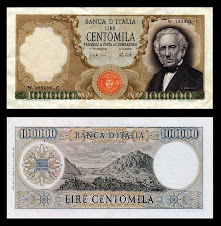Rapporto mondiale sullo sviluppo, 2008
Banca mondiale
Banca mondiale
Roberto Maurizio
E’ stato presentato a New York, il 19 ottobre 2007, il Rapporto annuale sullo sviluppo 2008, la più prestigiosa pubblicazione esistente al mondo sui temi inerenti l’economia e la crescita umana e civile. Una publicazione snobbata dalla stampa italiana e dai nostri politici. Quest’anno il Rapporto è dedicato all’Agricoltura (Agricolture for Development). Prenderemo in esame questo “testo sacro” per gli economisti dello sviluppo nei prossimi post.
Presentiamo, adesso, solo un resoconto del Rapporto in inglese. Nel precedente post è possibile visitare la pagina della Banca mondiale e il video di presentazione del Presidente della World Bank, Robert B. Zoellik.
World Development Report 2008 calls for greater investment in agriculture in developing countries. The report warns that the sector must be placed at the center of the development agenda if the goals of halving extreme poverty and hunger by 2015 are to be realized.
While 75 percent of the world’s poor live in rural areas in developing countries, a mere 4 percent of official development assistance goes to agriculture.
In Sub-Saharan Africa, a region heavily reliant on agriculture for overall growth, public spending for farming is also only 4 percent of total government spending and the sector is still taxed at relatively high levels.
For the poorest people, GDP growth originating in agriculture is about four times more effective in raising incomes of extremely poor people than GDP growth originating outside the sector.
WDR 2008-Agriculture for Development
While 75 percent of the world’s poor live in rural areas in developing countries, a mere 4 percent of official development assistance goes to agriculture.
In Sub-Saharan Africa, a region heavily reliant on agriculture for overall growth, public spending for farming is also only 4 percent of total government spending and the sector is still taxed at relatively high levels.
For the poorest people, GDP growth originating in agriculture is about four times more effective in raising incomes of extremely poor people than GDP growth originating outside the sector.
WDR 2008-Agriculture for Development
The latest World Bank World Development Report (WDR) calls forgreater investment in agriculture in developing countries andwarns that the sector must be placed at the center of thedevelopment agenda if the goals of halving extreme poverty andhunger by 2015 are to be realized. Titled 'Agriculture forDevelopment', the report says the agricultural and ruralsectors have suffered from neglect and underinvestment over thepast 20 years. While 75 percent of the world’s poor live inrural areas, a mere 4 percent of official developmentassistance goes to agriculture in developing countries. InSub-Saharan Africa, a region heavily reliant on agriculture foroverall growth, public spending for farming is also only 4percent of total government spending and the sector is stilltaxed at relatively high levels.The World Bank Group is advocating a new ‘agriculture fordevelopment’ agenda. According to the WDR, for the poorestpeople, GDP growth originating in agriculture is about fourtimes more effective in reducing poverty than GDP growthoriginating outside the sector. “A dynamic ‘agriculture for development’ agenda canbenefit the estimated 900 million rural people in thedeveloping world who live on less than $1 a day, most of whomare engaged in agriculture,” said Robert B. Zoellick, WorldBank Group President. “We need to give agriculture moreprominence across the board. At the global level, countriesmust deliver on vital reforms such as cutting distortingsubsidies and opening markets, while civil society groups,especially farmer organizations, need more say in setting theagricultural agenda.”According to the report, agriculture can offer pathways out ofpoverty if efforts are made to increase productivity in thestaple foods sector; connect smallholders to rapidly expandinghigh-value horticulture, poultry, aquaculture, as well as dairymarkets; and generate jobs in the rural nonfarm economy.“Agricultural growth has been highly successful in reducingrural poverty in East Asia over the past 15 years,” saidFrancois Bourguignon, World Bank Chief Economist and SeniorVice President, Development Economics. “The challenge is tosustain and expand agriculture’s unique poverty-reducingpower, especially in Sub-Saharan Africa and South Asia wherethe number of rural poor people is still rising and willcontinue to exceed the number of urban poor for at leastanother 30 years.”For its part, the World Bank intends to continue increasing itssupport for agriculture and rural development, following adecline in lending in the 1980s and 1990s. Commitments inFY07 reached $3.1 billion, marking an increase for the fourthstraight year.Go here for the report: http://go.worldbank.org/ZJIAOSUFU0("http://go.worldbank.org/ZJIAOSUFU0")













































































%5B1%5D.jpg)











Nessun commento:
Posta un commento